You can calculate the coordinates of the points where the two lines intersect & add them to your data frame:
m <- 5 # replace with desired y-intercept value for the horizontal line
# identify each run of points completely above (or below) the horizontal
# line as a new section
df.new <- df %>%
arrange(x) %>%
mutate(above.m = y >= m) %>%
mutate(changed = is.na(lag(above.m)) | lag(above.m) != above.m) %>%
mutate(section.id = cumsum(changed)) %>%
select(-above.m, -changed)
# calculate the x-coordinate of the midpoint between adjacent sections
# (the y-coordinate would be m), & add this to the data frame
df.new <- rbind(
df.new,
df.new %>%
group_by(section.id) %>%
filter(x %in% c(min(x), max(x))) %>%
ungroup() %>%
mutate(mid.x = ifelse(section.id == 1 |
section.id == lag(section.id),
NA,
x - (x - lag(x)) /
(y - lag(y)) * (y - m))) %>%
select(mid.x, y, section.id) %>%
rename(x = mid.x) %>%
mutate(y = m) %>%
na.omit())
With this data frame, you can then define two separate geom_ribbon layers with different colours. Comparison of results below (note: I also added a geom_point layer for illustration, & changed the colours because the blue in the original is a little glaring on the eyes...)
p1 <- ggplot(df,
aes(x = x, y = y)) +
geom_ribbon(aes(ymin=5, ymax=y), fill="dodgerblue") +
geom_line() +
geom_hline(yintercept = m) +
geom_point() +
theme_classic()
p2 <- ggplot(df.new, aes(x = x, y = y)) +
geom_ribbon(data = . %>% filter(y >= m),
aes(ymin = m, ymax = y),
fill="dodgerblue") +
geom_ribbon(data = . %>% filter(y <= m),
aes(ymin = y, ymax = m),
fill = "firebrick1") +
geom_line() +
geom_hline(yintercept = 5) +
geom_point() +
theme_classic()

